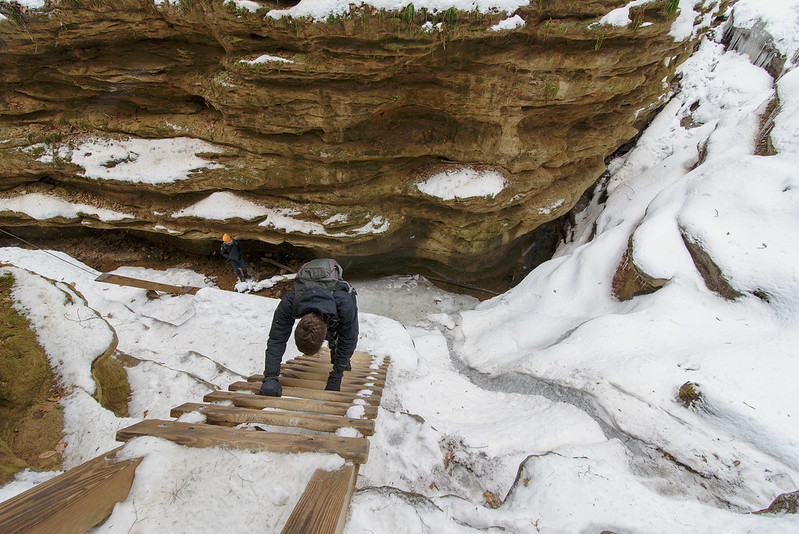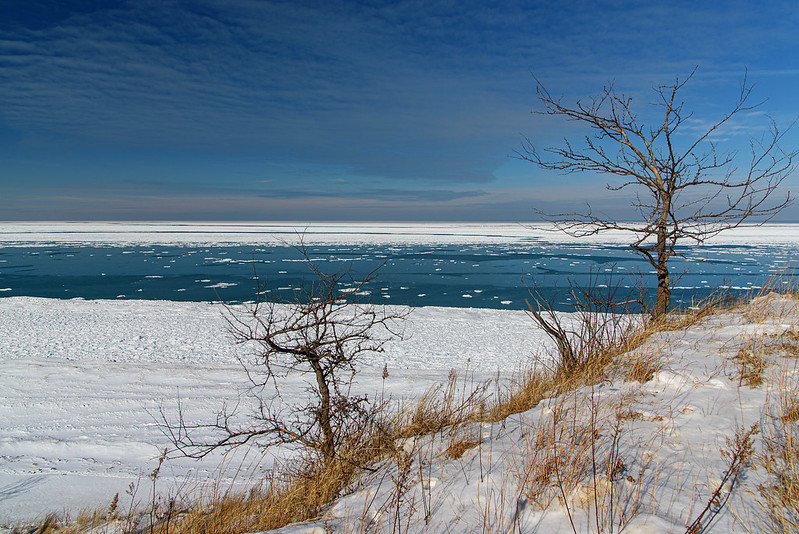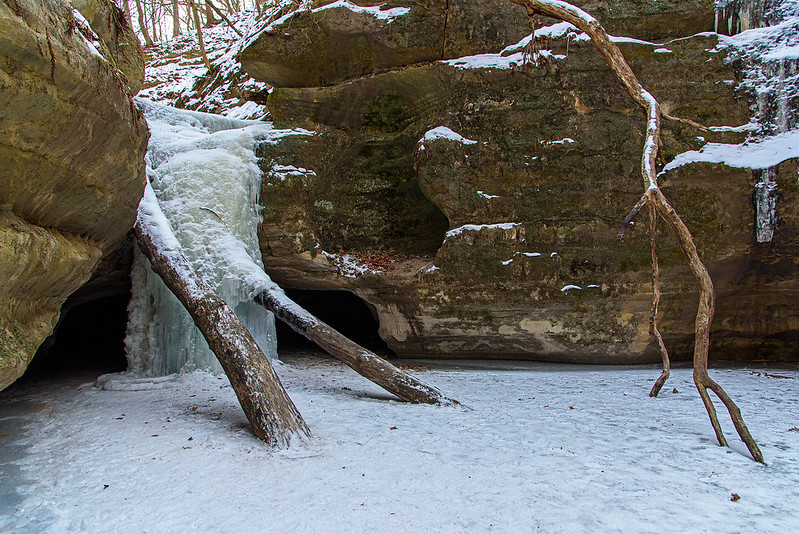
So many weeks of warm weather finally turned cold enough to form ice on the shoreline of Lake Michigan. Unlike most previous winters, the shelf ice only extends a few meters out, and it's only about half a meter in height. Bitter cold temperatures combined with high winds create the "best" shelf ice and mounds on the shoreline. On this day, the ice was being pushed off shore by southern winds. Looking closely at the ice on the lake, you can see it out in the middle of the lake.

Visitors to the lake in winter often see these tall mounds of ice and figure they're thick and solid enough to walk on. This day proves that shelf ice is not attached to the bottom of the lake - in fact, it's floating with the exception the first few meters where the waves break. Here, it's thick enough to touch the bottom, but that doesn't mean it's safe.
The large mounds of ice seen here now away from the shore, were once attached to the ice near the shore. The winds blowing off shore moved them slowly to their positions now. Imagine, venturing onto these mounds when they suddenly break off and begin floating out!

At the times of high winds, the ice mounds up often 10 or 15 feet tall. In times of low winds, the ice simply forms on the surface of the water. These jumbles of floe ice seen in the image above will form after the mounds and freeze together into this boulder-like texture on the water's surface. Then, if winds come again, mounds will form on the outer side of these flat areas, as the ice builds up. It can often extend 100 meters into the lake. At times, the floe ice covers all of the water that can be seen from shore, perhaps a mile or two out.

















































